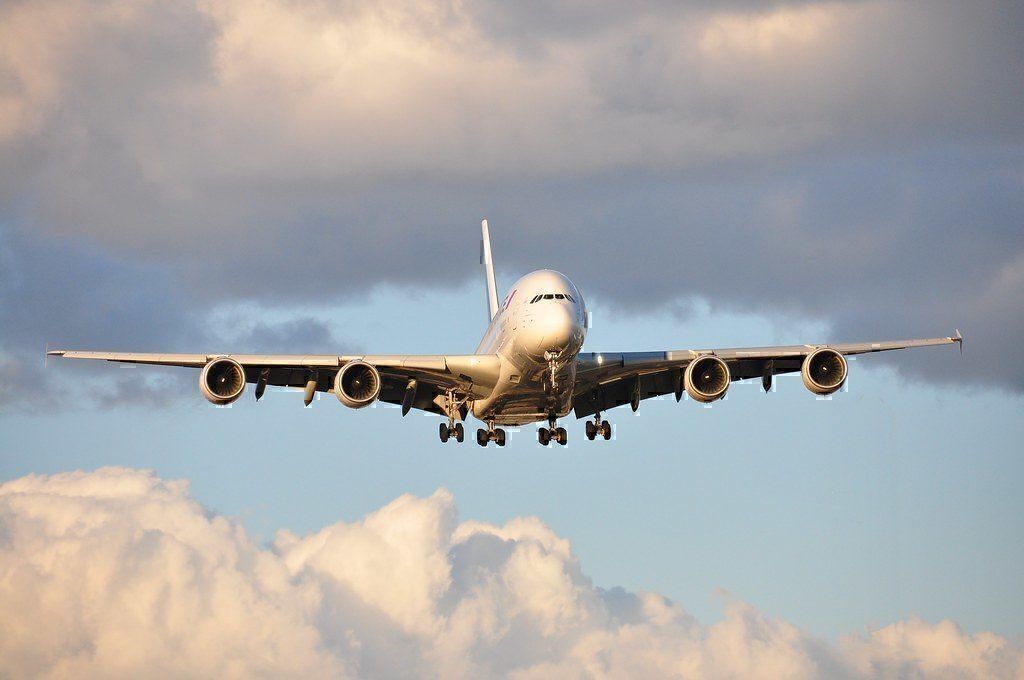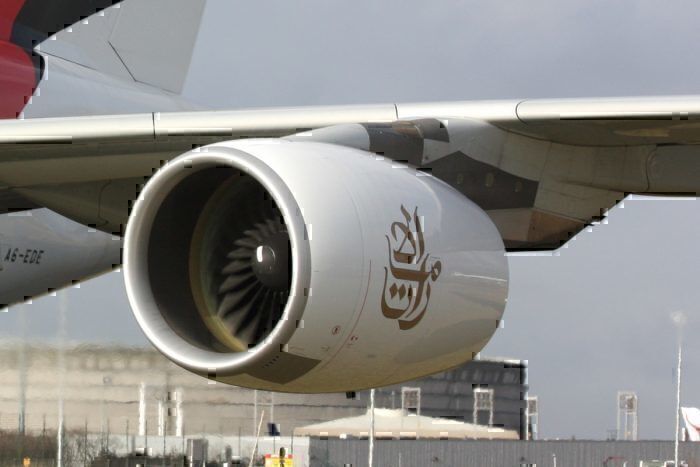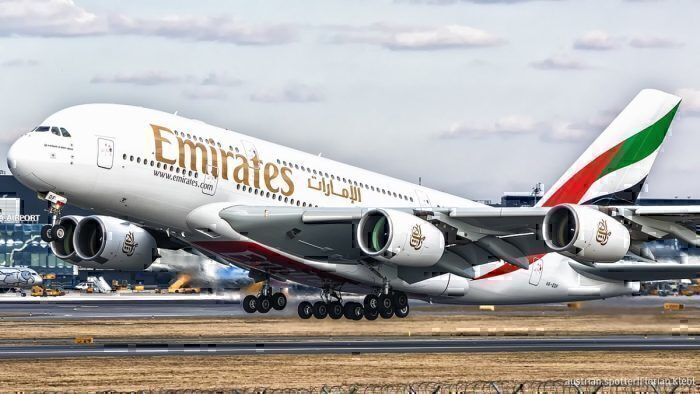The US Federal Aviation Administration (FAA) has issued an Airworthiness Directive for operators of the Airbus A380. Those which use the Engine Alliance GP7200 engines will be required to inspect parts of the engines for cracking and wear, potentially leading to a costly part replacement. This comes after an Air France A380 suffered an uncontained engine failure in 2017, parts from which were recovered earlier this year.
What’s the problem?
Back in September 2017, an Air France Airbus A380 suffered an uncontained engine failure during flight. Flight 66 was on route from Charles de Gaulle to Los Angeles International when the entire fan module including blades and disc, separated from the engine. The flight went on to land safely in Goose Bay.
The engine parts were missing for some time, but investigators knew it was somewhere over Greenland when the incident occurred. A search was launched, and in May fragments were found, although unfortunately not the most important parts. But, in July, almost two years after the incident occurred, the key parts were discovered.
After being dug out of the ice, the parts were sent off to be examined by the authorities. Following examination, Flight Global reports that the powerplant manufacturer, Engine Alliance, has determined a need for inspection of the fan hub assembly. As such, the FAA has issued an Airworthiness Directive instructing all operators flying in US airspace to check out their engines.
The FAA directive
According to the details of the Airworthiness Directive (AD), all Engine Alliance (EA) GP7270 and GP7277 model turbofan engines will be affected.
The AD requires operators of the Airbus A380 with these models of engines to conduct and ECI and inspection of the fan hub for cracks and damage. It also requires independent inspection of the engine and fan hub assembly before the part is reassembled. In some cases, dependent on the serial number of the engine, the AD will also require the engine fan hub blade lock assembly to be replaced.
The FAA has estimated the cost for compliance to be $1,190 for the ECI and initial inspection, which equates to 14 work-hours at US rates of an average of $85 per hour. To replace the fan hub blade lock assembly, this will require another 25 work hours plus approximately $28,000 for the part, which will bring compliance to $30,125 plus the cost of the initial inspection.
For those airlines who have the serial number that requires the fan hub assembly replacing entirely, the cost per product will be significant. The FAA estimate 50 work-hours plus a part cost of $790.500, bringing the total expense to $794,750. Presumably, this is per engine, of which the A380 has four. This means that some unlucky operators could be looking at a cost of over $3m per plane to comply with the instruction.
The Airworthiness Directive comes into effect on the 30th August, 2019. The FAA has given airlines until 1st September 2020 to comply.
Which airlines will be most affected?
While there are a few airlines out there still operating the Airbus A380, there is one airline which really stands out as being in the firing line. Emirates are the world’s largest operator of the A380, with 112 in its fleet and a further 11 on order.
Back in 2002, Emirates picked Engine Alliance to supply the powerhouses for its 22 firm and 10 options order of its first A380s from Airbus. EA became the sole supplier for the Emirates A380 engines until 2015, when they were ousted in favor of Rolls Royce. This means a large proportion of the fleet will require inspection, which will present not only a cost issue for Emirates but also some practicality challenges.
With each inspection and initial replacement of the blade fan lock assembly estimated to take 39 hours per engine, that’s a lot of hours and a lot of hangar space to find for all those aircraft. Although not every engine will require the full replacement, those that do will be offline for a further 50 hours per engine. Although September 2020 feels like a long time away right now, Emirates are going to have to really pull out all the stops to get every engine in the fleet inspected and rectified by September 2020.
But it’s not just Emirates who could be in trouble with this AD. MRO Network estimates that the Engine Alliance GP7200 engines power 60% of the world’s A380s, including those with Etihad, Air France, Korean Airlines and Qatar. All of these operators will need to perform the checks, although not all the engines will require full unit replacement.
The other saving grace is that only those aircraft flying into US airspace will be required to comply.. unless, of course, other aviation authorities follow the FAA’s lead. If EASA also issues a similar requirement, this could have a much greater impact on Emirates.
It will be interesting to see how this development plays out on the scheduling and capacity of affected airlines, Emirates in particular.



